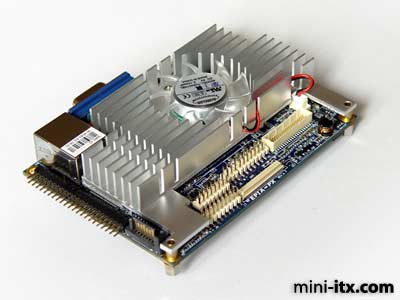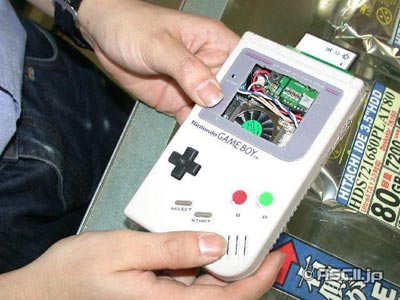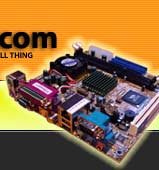|  | September 05, 2017
Choosing the right DC-DC PSU August 27, 2015
AMD's Project Quantum August 13, 2015
The Redstone PC is the ultimate Mini-ITX Minecraft Machine October 09, 2014
The "Restomod TV" April 09, 2013
Installing NAS4Free February 28, 2013
Building an XBMC 12 Home Theatre PC January 25, 2011
XBMC Guide updated to version 10.0 August 06, 2010
Building a Green PC February 15, 2010
Building an ION powered HTPC with XBMC October 10, 2008
The "Cambridge Autonomous Underwater Vehicle 2008" |
|  | | | September 12, 2008
"Florian", the DVD burning robot September 05, 2008
The "i-EPIA" May 22, 2008
The "GTA-PC" April 14, 2007
The "Digg" Case January 19, 2007
The "ITX-Laptop" December 07, 2006
The "Tortoise Beetle" October 02, 2006
The "DOS Head Unit" August 31, 2006
The "Janus Project" August 05, 2006
The "Leela PC" June 26, 2006
Nano-ITX in a Football May 17, 2006
The "EPIA Alloy Mod" April 11, 2006
Neatorama's Collection of Case Mods February 18, 2006
The "Rundfunker" October 24, 2005
The "ITX TV" October 06, 2005
The K'nex-ITX August 05, 2005
The "Waffle Iron PC" July 21, 2005
The "Supra-Server" July 18, 2005
The "Mega-ITX" July 07, 2005
The "Encyclomedia" May 25, 2005
The "Accordion ITX" |
|  | | | May 16, 2005
The "FileServerRouterSwitch" May 15, 2005
The "Mini Falcon" May 13, 2005
The "Bender PC" May 11, 2005
The "BBC ITX B" May 10, 2005
The "Frame" April 20, 2005
The "Jeannie" March 09, 2005
The "Cool Cube" January 30, 2005
First Nano-ITX Project? January 17, 2005
The "iGrill" January 15, 2005
The "Gumball PC" December 15, 2004
The "Deco Box" December 03, 2004
The "TERA-ITX" October 06, 2004
The "Coealacanth-PC" September 17, 2004
The "Gramaphone-ITX-HD" August 26, 2004
The "C1541 Disk Drive ITX" August 25, 2004
The "SEGA-ITX" August 13, 2004
The "Quiet Cubid" August 06, 2004
The "BMWPC" July 14, 2004
The "Moo Cow Moo" July 02, 2004
The "Mini Mesh Box" Full alphabetical archive on right hand side of page... |
|
|
VIA EPIA PX10000 Pico-ITX Review
Final Thoughts

We love how small and quiet this board is. An EPIA CN 10000 Mini-ITX motherboard now seems huge in comparison, but the PX is equally as powerful and consumes less power. In a month or two, the average punter will be able to do things that only people with access to industrial boards could do. We spent a lot of time testing video playback, but we know from running our store that EPIA boards are put to work doing a huge range of things - certainly not just media playback devices. The small size of this board can only add to these possibilities. We'd really like to see a Pico-ITX powered robot on our project pages one day.
The current lack of Windows video acceleration was a disappointment. VIA only go half way with this feature on EPIA motherboards. They produce video drivers with the capability of supporting acceleration, then expect customers to purchase their playback filters from third parties. We'd like to finally see the other half provided by VIA - in particular an accelerated H264 MPEG-4 playback filter for EPIA motherboards. We'll gladly even pay a (small) fee for it. This review would have been released a week earlier and $70 under budget if we hadn't spent so long trying to get this one feature to work.
VIA's support for Linux seems a lot more enthusiastic than in the past, but still needs a central repository and better documentation. Installing an EPIA to playback video effectively under Linux is usually a paperchase involving trips to several different websites. Most people aren't Alan Cox - this needs to be made as simple as possible. VIA could learn from NVidia here - NVidia's Linux drivers have equal prominence with Windows drivers on the NVidia website, and install within minutes as easily as any Windows driver.
As with the Nano-ITX, we're concerned about the lack of enclosures available - though of course it's very early days. Industrial customers may not see this as a problem, but many individual customers will want something tiny to put their board inside. Manufacturers are understandably unwilling to invest in new case designs until a user base is available, creating a Catch-22 situation. Perhaps VIA could do something to help things along here, at relatively low cost. A well designed simple metal frame for the board could have been provided to give a starting point for both manufacturers and home users.
Pricing is always a difficult issue with VIA boards. Development costs have to be recouped, and industrial pricing is traditionally higher than consumer pricing. VIA sell into both markets and have tended to price their products somewhere in the middle, satisfying industrial users but confusing some consumers. Hopefully VIA will get their pricing right with this board, and we will see future generations from VIA and other manufacturers.
Pros
- Incredibly small
- Full x86 compatible motherboard
- Very quiet and effective fan and low-profile heatsink
- Very low power consumption
- Capable medium resolution media playback
- DVI-D output with a cable provided
- Interface board a bonus*
- No need to remove heatsink to install RAM like the Nano-ITX
- Accelerated encryption features should be impressive
Cons
- Accelerated video seems difficult/impossible to enable
- Interface board adds to size, could have been realised better
- Some of the provided cables could be more substantial
- Lack of enclosures may be a problem
- No Mini-PCI Express expansion or similar
- Not completely fanless
- Only one SATA port
*Update (25th July): The PX-O board is not included in all (or perhaps any) retail packages. Instead, a 4x USB 2.0 cable is included.

As a reminder of just how small this thing is, employees at a Japanese store got hold of an early board and put together this Pico-Gameboy. The system boots XP from a 4GB Compact Flash card, with a VGA output and 12V DC input on one side. The A/B buttons became power and drive activity lights. Those crazy Japanese fools.
Disclaimer: All specifications are of course subject to change. Our PX 10000 is a first generation production Pico-ITX board sourced by ourselves, not a review sample. At the time of writing the Mini-ITX store hasn't received any units - though we don't expect much to be different when quantity arrives in the next month or two.
Many thanks to Hiro and Marc for their assistance with this review.
<-- Back
to Mini-ITX.com
*Advert* World's Smallest 12V DC-DC ATX
Power Supply now at the Mini-ITX store! *Advert*
The picoPSU is now available at the Mini-ITX.com Online Store. We serve the UK, Europe, USA and beyond. Order in-stock components before 7.00PM GMT and we'll ship same day! |
|
|
|







